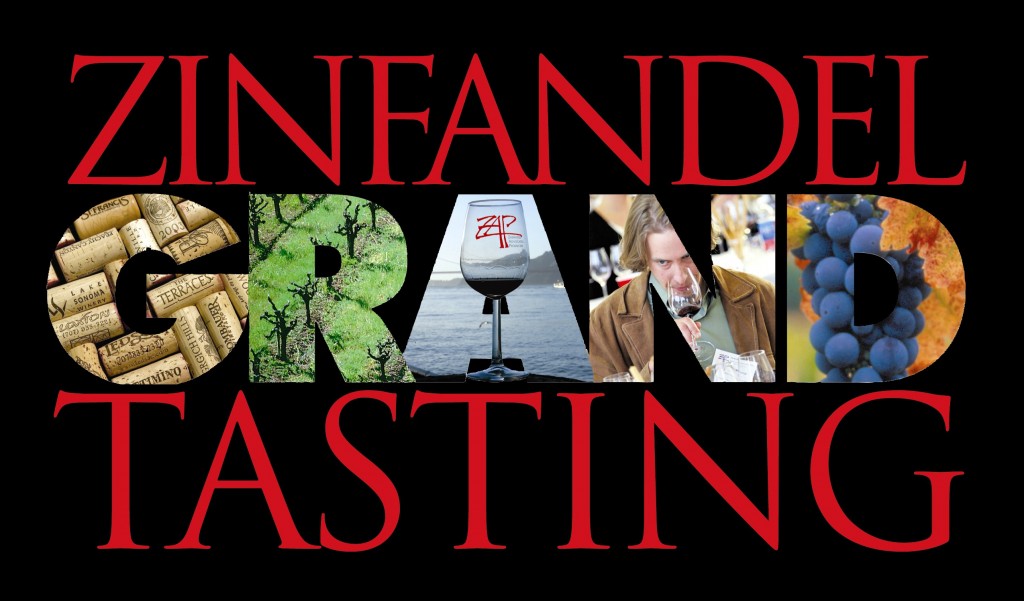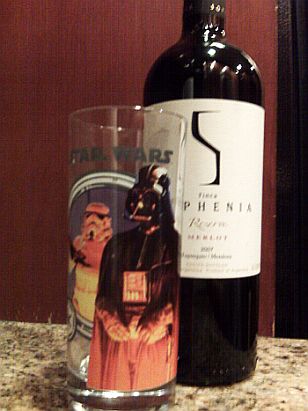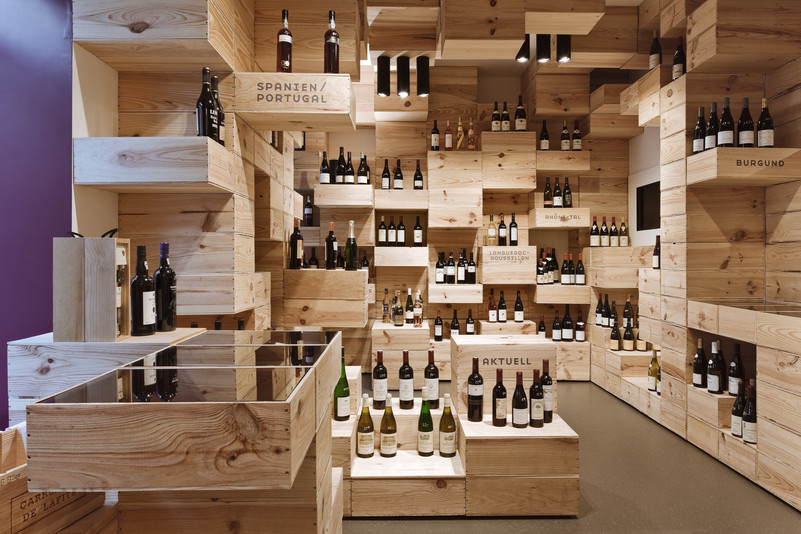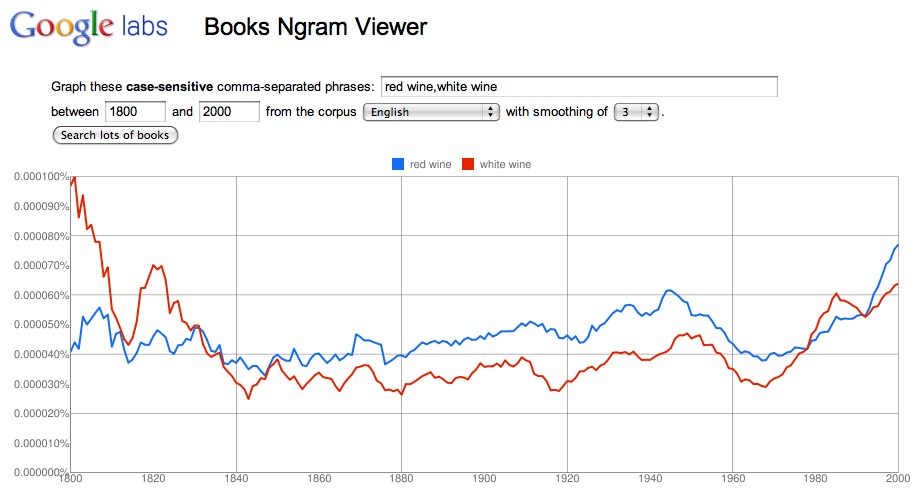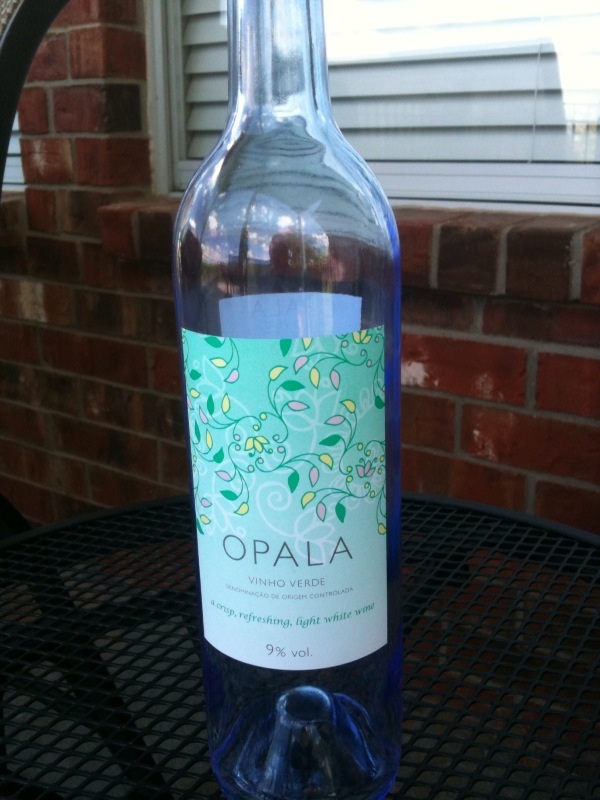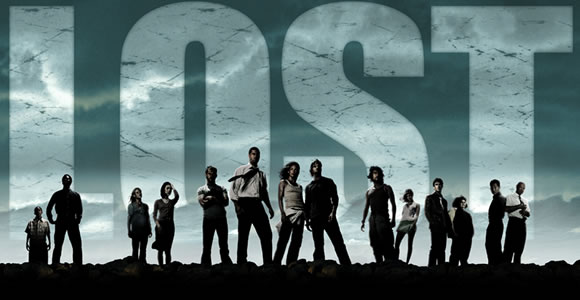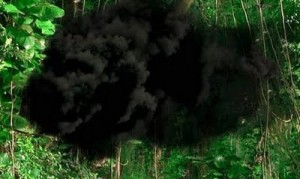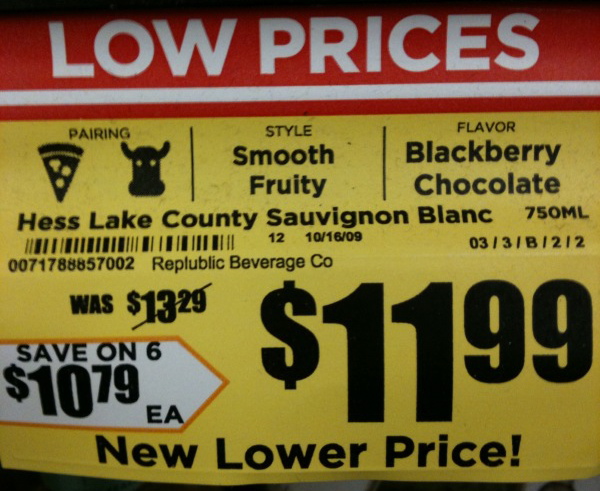I’m looking forward to the Zinfandel Grand Tasting here in Austin this Sunday (organized by ZAP and The Wine and Food Foundation of Texas. If any of my Austin readers will be there, let me know. Or just look for me there… I’ll be the one with the purple teeth.
Category Archives: Commentary
Star Wars and Wine
Check out this Tumblr: Star Wars and Wine.
It’s way more Star Wars than wine (in fact this is the only wine-related thing I could find), but here’s hoping that it’ll live up to it’s name.
But where’s the chilled Kendall Jackson chard?
More Mourvèdre Love in the Blogosphere
I was happy to stumble upon this today. John Kafarski over at the Wine Culture Project is launching a new project he’s calling The Mourvedre Minutes.
[I]n The Mouvedre Minutes, across the world we shall travel paying homage to a relatively unknown grape as we survey its anonymous greatness.
Can’t wait to follow this project and see what gems he turns up. (And I hope to resume my own Mourvèdre Monday series, and blogging in general, soon.)
Wino fun with Google Books Ngram Viewer
Google Books Ngram Viewer allows you to run graphs of how often different words or phrases have occurred in a corpus of books over a selected span of years. What does one do with such a powerful tool? Play around with wine words of course! Check out balance of power between “red wine” and “white wine” below. (What happened in the 1980s?)
Three Thoughts on the Latest Wine Spectator (Aug. 31, 2010)
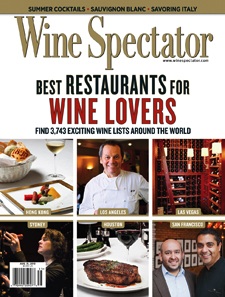 It’s the “Best Restaurants for Wine Lovers” issue with a directory of all their award winners. I don’t want to rehash the legitimate questions about the level of scrutiny (or lack thereof) applied to these awards. I just want to take them at face value and make some observations.
It’s the “Best Restaurants for Wine Lovers” issue with a directory of all their award winners. I don’t want to rehash the legitimate questions about the level of scrutiny (or lack thereof) applied to these awards. I just want to take them at face value and make some observations.
1. Apparently, you can’t have a best-of-the-best wine programs without strength in Bordeaux. Of the 75 Grand Award winners around the world — the three glass ratings — only one doesn’t have Bordeaux (or France, generally) among the “wine strengths” listed in it’s profile. The sole exception to the rule is Del Posto, whose strengths are listed as Italy and Champagne.
More intriguing to me are the “Best of Award of Excellence” winners (what an awkward name) — the two glass ratings — that have a more interesting or unexpected emphasis:
- Everest (Chicago): Alsace
- Salpicón (Chicago): a “comtemporary Mexican” restaurant with strengths in California, Spain, Austria and Italy.
- Lotus of Siam (Las Vegas): a Thai restaurant with strengths in Germany and France.
- Hearth (NYC): wine strengths listed as “International” – I can imagine the editor reviewing their geeky-cool list, throwing his/her hands up in dismay and saying let’s just call it “International”
- Telepan (NYC): wine strengths include the Loire, in addition to California, Italy and Burgundy.
- Bleeding Heart (London): a contemporary French restaurant with strength in New Zealand wines (and French)
- Deli Swiss (Dominican Republic): a “French/Caribbean” restaurant with wine strengths in Spain, France, Chile and Argentina
2. There are no two or three glass winners here in Austin, Texas. That means we’re trailing noted culinary hotspots like:
- Pittsboro, NC (Fearrington House Restaurant)
- Moose, WY (Dornan’s)
- Iowa City, IA (Chef’s Table)
- Shepardstown, WV (Bavarian Inn)
- Hattiesburg, MS (Crescent City Grill)
- Anchorage, AK (The Crow’s Nest and Marx Bros. Cafe)
3. Outside of the restaurant awards section, I was struck by this while flipping through the reviews of new releases… I really need to start paying more attention to Austrian wines. There are tons of Rieslings and Grüner Veltliners rated Outstanding (90-94) in the under $30 price range. Producers: Johann Donabaum, Knoll, Gritsch Mauritiushuf, Petra Unger, Rainer Wess.
Vinho Verde Makes Me Want to Quit Blogging
If you’re not familiar with vinho verde, you’ve got to rectify that. It’s a very light, low alcohol (<10%), slightly effervescent white white from Portugal. (Actually, it is an DOC appellation in Portugal and there are red and pink versions, but the vast majority of vinho verde that is exported is white.) It’s called vinho “verde” not because it’s actually green (like crappy American beer on March 17), but because it’s meant to be consumed young. The grapes typically used are Loureiro, Trajadura, Batoca, Arinto/Pedernã, Avesso and Azal. You can also find versions made from Alvarinho, but those are a bit of a different beast – higher alcohol levels and a few dollars more.
What vinho verde is mostly is refreshing. And goddammit I live in Texas and it’s hot. And sometimes I just want a wine that is thirst quenching and fun to drink.
But back to the headline. When I drink vinho verde, I forget about assessing it. I don’t care about flavor descriptor or scores. I just drink it. I usually keep the bottle on the table because I know I’m going to want a quick refill – and at <10% abv you can actually drink several glasses.
And if you pay more than $10 or $11, you did it wrong. You can find plenty of satisfying examples for $7 or $8, or even less.
This is what wine should be about.
—
This post was inspired by a recent dinner after I stood over the grill on a 95-degree evening on the second day of Summer. The bottle I opened was the Opala Vinho Verde (NV). In the spirit of this post, I won’t do a full VINEgeek review with grape percentages, vineyard details, etc. Instead, I’ll just hit you with a Free Association:
It’s a lifesaver when you need thirst-quenchin’
like a kiss with a lymon twist, now you know that’s kickin’
and to push deeper into the realm of geekery…
What Would LOST Characters Drink?
This is the first of what may become a series (irregularly published) called What Would They Drink? where I’ll pick characters from a movie, TV show, book, etc. and say what kind of wine they’d drink if they were wine drinkers. Hilarity will surely ensue.*
* Actually, this is almost certainly only interesting to me.
LOST Characters
Jack: Something about that old Bronco he drives makes me think he’d drink off the beaten path, appreciates older things. Maybe properly-aged Hunter Valley Semillons.
Kate: Living on the run, Kate probably buys her wine at the convenience store. Rex Goliath Chardonnay.
…
Sawyer: During all his time as a con-man seducing the ladies, he’s secretly developed a fondness for ice-cold Pinot Grigio.
…
Locke/Black Smoke Monster: Cahors
…
Hurley: Chateau d’Yquem. Sweet and yummy and he’s got the money.
…
Benjamin Linus: He seems like the German Riesling type to me.
…
Richard Alpert: Madeira, the longest-lived wines in the world.
…
Desmond: Moriah Vineyard Cabernet Sauvignon
…
Rousseau: ’85 Rhone
…
What do you think? Please offer up your own thoughts in the comments.
What’s Wrong With This Shelf Talker?
Mashup Wine Names
The wines in my last two posts have had what I’ll call mashup names:
Petite Petit – a blend of Petite Sirah and Petit Verdot
Mo Zin – a blend of Mourvèdre and Zinfandel, plus others (though it’s not clear if the Mo really stands for Mourvèdre or not. They also have a Mo Jo without Mourvèdre and they say things like Drink Mo Better Wine)
This got me thinking about other possible mashup names. So as a service to the wine industry I offer the following (not-so-serious) ideas free of charge. Now they may not all make sense oenologically-speaking, but that rarely stops a marketer with a branding idea!
Merlognier – Merlot + Viognier
The Merlot could be co-fermented with a small bit of Viognier like they do with Syrah and Viognier in Côte-Rôtie.
Marsangiovese – Marsanne + Sangiovese
The Marsanne could play the role that Trebbiano or Malvasia used to play in the Chianti blend.
ShiraZin – Shiraz + Zinfandel
I’m surprised this one doesn’t already exist.
Charbonarda – Charbono + Bonarda
This one could work. In fact, depending on where you are, they may even be the same grape.
Dolcettocai – Dolcetto + Tocai
This one makes no sense.
~
Please suggest some other examples in the comments!
